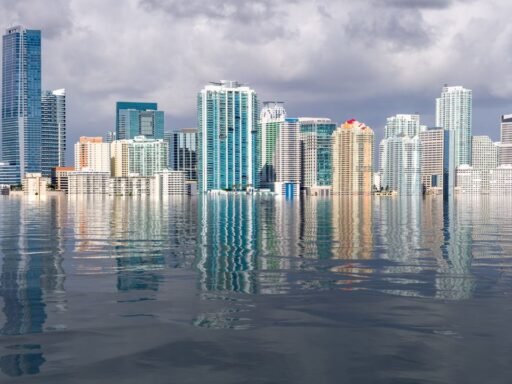The question of what existence would be like on another planet has captivated scientists, philosophers, and dreamers for hundreds of years. With the discovery of heaps of exoplanets—planets that orbit stars outside our sun device—the opportunity of lifestyles beyond Earth has become more practicable than ever. But what might lifestyles be like on any other planet?
What Would Life Be Like on Another Planet?
How would living conditions, biology, or even lifestyle range in a world massively one-of-a-kind from Earth? In this newsletter, we explore the demanding situations, potential diversifications, and interesting possibilities of existence on any other planet.
1. The Essentials for Life: Atmosphere and Water
When considering what life might be like on every other planet, the primary query is whether or not that planet can assist existence in any respect. For life as we know it, the presence of liquid water and a stable atmosphere are vital. Earth’s ecosystem, made up mainly of nitrogen and oxygen, provides the right balance for maintaining lifestyles. It protects organisms from harmful space radiation, regulates temperature, and allows for breathing.
On any other planet, the composition of the atmosphere could be absolutely different. For example, a planet with an ecosystem wealthy in carbon dioxide, like Venus, would be inhospitable to people with out technological intervention. Life on any such planet might evolve to breathe gases other than oxygen, or superior civilizations should create sealed environments with life-guide structures.
Similarly, water in liquid shape is important for acknowledged existence strategies. On Earth, water acts as a solvent in biochemical reactions and is essential for mobile feature. On another planet, if water existed only as ice or vapor, existence bureaucracy might evolve to apply alternative beverages, which includes methane or ammonia, which exist in liquid shape underneath one-of-a-kind temperature and strain conditions. Titan, Saturn’s biggest moon, has lakes of liquid methane, leading a few scientists to invest that life should doubtlessly exist in a shape completely surprising to us.
2. Gravity: How Would It Affect Life?
Gravity is one of the maximum essential forces shaping life on Earth. Our our bodies are tailored to Earth’s precise gravitational pull, which dictates the whole thing from our muscle and bone energy to the manner fluids pass within our bodies. But what might life be like on any other planet with a different gravitational force?
On a planet with decrease gravity, along with Mars, which has approximately 38% of Earth’s gravity, lifestyles forms could evolve to be taller and more sensitive. The decreased gravitational pull might make movement less difficult, however it would also lead to muscle and bone atrophy over the years. Humans could probably want to undergo sizable bodily edition to stay lengthy-term in such an environment, probable requiring enhanced physical education, exoskeletons, or even genetic change to hold muscle and bone density.
On the other hand, a planet with more potent gravity than Earth might present one-of-a-kind challenges. Life on a high-gravity planet might evolve to be shorter and stockier to withstand the accelerated gravitational forces. Moving around might be tons more difficult, and larger organisms like human beings would struggle to live on without the aid of advanced generation.
Three. Climate and Weather: Extreme Conditions
What could life be like on every other planet if it had a vastly distinctive weather from Earth’s? Earth’s climate is relatively solid, with a range of temperatures and climate styles that support numerous ecosystems. However, many planets and moons in our solar device enjoy extreme climates that could notably adjust how life exists.
For example, on Venus, temperatures bounce above 900 tiers Fahrenheit (475 ranges Celsius), and the atmosphere is packed with thick clouds of sulfuric acid. In such situations, human life would be not possible with out advanced lifestyles-support structures and protecting technology. Any native existence bureaucracy could need to be rather resilient, perhaps counting on intense chemical methods to live to tell the tale the sizzling heat and corrosive environment.
In contrast, a planet like Mars has freezing temperatures and a skinny atmosphere that gives little protection from cosmic radiation. Colonists on Mars might need to live in sealed, weather-managed habitats with constant materials of oxygen, water, and heat. Life paperwork on one of these planet may evolve to live on intense bloodless, possibly the usage of antifreeze-like materials of their blood or developing thick exoskeletons to defend in opposition to radiation.
Then there are planets with intense seasons. On exoplanets which have exceedingly elliptical orbits, lifestyles would possibly have to undergo long periods of freezing bloodless observed through sizzling warmness. In such environments, life forms ought to evolve to enter dormant states all through severe weather, similar to how sure Earth animals hibernate or estivate to live on adverse situations.
Four. Day Length and Light Conditions
Another essential consideration when imagining what lifestyles might be like on some other planet is the duration of a planet’s day and its exposure to light. On Earth, a day lasts 24 hours, and this regular cycle of light and darkish is important for regulating biological rhythms, consisting of sleep patterns and photosynthesis in flora.
However, on a planet with a much shorter or longer day, life could need to evolve to different circadian rhythms. On a planet with a day that lasts just a few hours, plant life would possibly evolve to photosynthesize extra effectively in short bursts, even as animals might increase quicker lifestyles cycles to fit the fast alternation between day and night time. Alternatively, on a planet with a day lasting numerous Earth months, lifestyles paperwork may evolve to keep electricity at some point of lengthy periods of daylight and enter hibernation-like states for the duration of prolonged darkness.
In the case of planets orbiting dim stars, along with crimson dwarfs, life might evolve to apply different varieties of strength except daylight. For instance, organisms could harness geothermal electricity or even evolve to produce their own mild thru bioluminescence, similar to deep-sea creatures on Earth.
5. Potential Adaptations of Life Forms on Another Planet
Life on Earth has adapted to a extensive variety of environments, from the crushing depths of the ocean to the frigid polar ice caps and scorching deserts. Given the right situations, life on any other planet could adapt in similarly unexpected and diverse methods.
On a planet with severe radiation, existence bureaucracy would possibly evolve thick, protective exoskeletons or expand the potential to restore DNA harm caused by radiation, just like sure extremophiles found on Earth. In intense temperatures, organisms could evolve insulating layers of fats or specialized enzymes that allow them to continue to exist and thrive in otherwise antagonistic environments.
One of the most fascinating opportunities is that existence on every other planet might not be carbon-based totally, as it’s far on Earth. Scientists have speculated about the potential for silicon-based life forms, given silicon’s chemical similarities to carbon. This may want to result in organisms with absolutely different organic strategies and structures, adapted to environments that could be poisonous or inhospitable to carbon-primarily based life.
6. Human Colonization: Adapting to Life on Another Planet
What would existence be like for human beings on some other planet? Colonizing some other international would present widespread challenges, from offering primary necessities like food, water, and oxygen to adapting to totally new environments. Mars, with its especially Earth-like conditions, has been a number one attention of human colonization efforts.
To live on Mars, human beings could want to create self-maintaining habitats equipped with lifestyles-guide structures, together with oxygen turbines, water recycling systems, and synthetic environments to grow food. The loss of a breathable ecosystem manner that humans could want to wear space suits whenever they ventured outside. Over time, human beings might genetically modify themselves or use advanced era to better adapt to Mars’s decrease gravity, radiation publicity, and bloodless temperatures.
Other ability colonization goals include the moons of Jupiter or Saturn, such as Europa or Titan. These worlds provide the opportunity of liquid water beneath their icy surfaces, however human existence might nevertheless require advanced technology to live to tell the tale.
Conclusion: What Would Life Be Like on Another Planet?
The question of what existence could be like on every other planet opens up a world of charming possibilities and demanding situations. From extreme climates to distinct gravitational forces, lifestyles on other planets may want to evolve in approaches which might be wildly one of a kind from what we revel in on Earth. While the look for extraterrestrial life maintains, it is clear that any shape of existence—whether microbial or clever—would want to conform to the precise conditions of its planet.
For people, colonizing some other planet could require full-size technological improvements and a deep expertise of a way to live on in alien environments. As we discover the universe, the dream of residing on any other planet may additionally one day turn out to be a reality, however it’s going to come with the need for version, innovation, and resilience in the face of a wholly new international.







